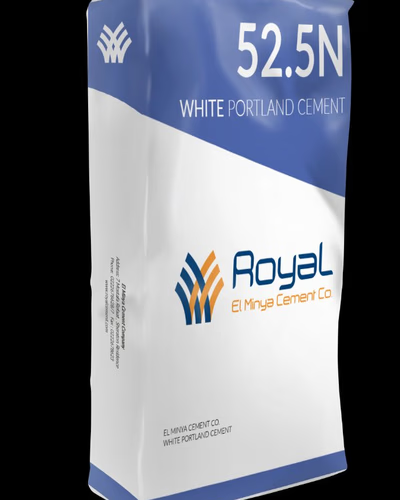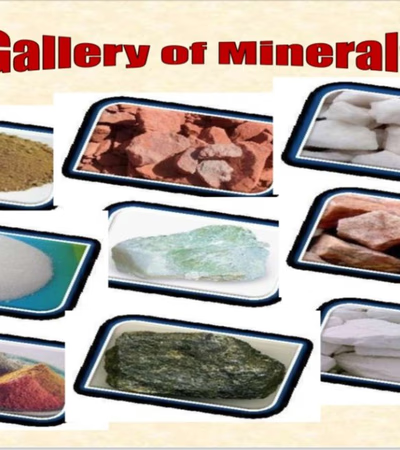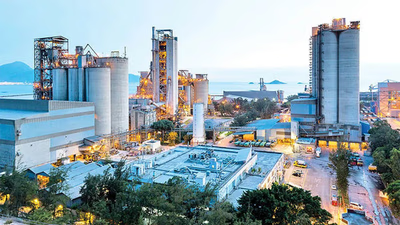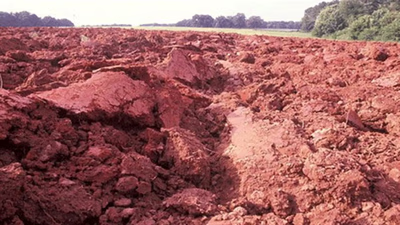
What drives the construction materials trade in the Middle East and West Asia?
The construction materials market in the Middle East and West Asia is a dynamic hub of trade activity, fueled by growing infrastructure projects and urbanization. Key commodities such as brick, plaster, cement, sand, wood and timber, clay, ceramic tiles, glass, lime, paint, concrete blocks, rebar, and beams are essential components of this thriving sector. Regional B2B marketplaces and trade platforms are pivotal in connecting verified exporters and importers, facilitating seamless transactions and fostering business networking opportunities.
Brick, for instance, is a cornerstone of the Middle Eastern masonry materials market, with significant import and export activity across West Asia. The trade of plaster, particularly gypsum-based products like Plaster of Paris, is driven by demand from Asian gypsum industries and construction markets. Cement, a critical building material, is produced extensively in the Middle East and exported globally, underscoring its importance in regional and international markets.
Sand, wood, and timber also play crucial roles in construction, with active trade channels for raw materials in West Asia. The clay market, including ceramic tiles, is equally vibrant, supported by robust buying, selling, and export activities. Glass, lime, and paints are other indispensable materials, with specialized markets for each within the region.
Concrete blocks, rebar, and beams are vital for structural applications, with trade centers across Asia and the Middle East facilitating their movement. These materials fall under various trade categories, such as HS codes 25, 44, 68, 69, and 70, highlighting their significance in global commodity exchanges.
Platforms like Aritral simplify these transactions by offering product listings, direct communication, and AI-powered marketing solutions. By fostering transparency and efficiency, such platforms empower stakeholders in the construction materials sector. This strategic approach to trade ensures that businesses in West Asia and the Middle East remain competitive and well-connected in the global marketplace.
-
 Almas Astone 4 months ago
Almas Astone 4 months ago Iran
Export of all stone building products
Iran
Export of all stone building products
Production of various stone building products. Internal wall panels, external facade, production of various artificial stones including nano cement pl...Details
-
 Kemet Export-Import 1 months ago
Kemet Export-Import 1 months ago Egypt
Building Materials
Egypt
Building Materials
Kemet Import & Export owns its own factory in Egypt and is an exclusive agent for major cement and iron and steel factoriesDetails
-
 Ali Diabi 1 months ago
Ali Diabi 1 months ago Iran
Building Stone
Iran
Building Stone
I am an exporter of building stones to European and Asian countries.Details
-
 Mohammad Maatouk 1 months ago
Mohammad Maatouk 1 months ago Lebanon
Wood
Lebanon
Wood
The products we work with are guaranteed 100% and are certified with trust and time.Details
-
 Fikri 5 months ago
Fikri 5 months ago Turkey
Real Estate and Meteorite
Turkey
Real Estate and Meteorite
Sale of all kinds of real estateDetails
-
 Jone Salauneune 5 months ago
Jone Salauneune 5 months ago New Zealand
Fijian Lumber
New Zealand
Fijian Lumber
We can supply mahogany, pine and other hardwoods.Details
-
 Eng. Lotfy Kamel 5 months ago
Eng. Lotfy Kamel 5 months ago Egypt
Mineral and Industrial Raw Materials
Egypt
Mineral and Industrial Raw Materials
We are a rapidly growing Egyptian company, founded by a group of specialized experts who have great experience in the field of trade, mining, and supp...Details
-
 Gogoods 1 months ago
Gogoods 1 months ago Armenia
B2B Company in Armenia
Armenia
B2B Company in Armenia
We are proud to offer a wide and diverse range of products including industrial goods, agricultural products, building materials, food items, pet supp...Details
-
 Adam Ibrahim Al-Fajria Khalil 1 months ago
Adam Ibrahim Al-Fajria Khalil 1 months ago Sudan
Liquid Nitrogen
Sudan
Liquid Nitrogen
Cold Liquid NitrogenDetails
-
 Mohammad 6 months ago
Mohammad 6 months ago Kuwait
Meteorite
Kuwait
Meteorite
A meteoriteDetails
-
 Ahmed 1 months ago
Ahmed 1 months ago Egypt
Granite New Halayeb and Halayeb and Jundola Red Aswan Black Aswan Gray
Egypt
Granite New Halayeb and Halayeb and Jundola Red Aswan Black Aswan Gray
Al-Fahd Stone for Marble and Granite for exporting the best types of marble and granite to all Arab countries, African countries, the Gulf, and foreig...Details
-
 Hasan 1 months ago
Hasan 1 months ago Turkey
Manuscript
Turkey
Manuscript
ManuscriptDetails
-
 Ishaq 1 months ago
Ishaq 1 months ago Algeria
Sword
Algeria
Sword
Sword 1883Details
-
 Abd Alhakim Bargan Bargan 2 months ago
Abd Alhakim Bargan Bargan 2 months ago Libya
Cement
Libya
Cement
Greetings to you. What is required is gray portland cement N42.5 according to American specifications. It must be a nylon bag with a capacity of 50 ki...Details
-
 Kika Holding Trading 1 months ago
Kika Holding Trading 1 months ago Oman
First Grade Flour from Russia
Oman
First Grade Flour from Russia
First Grade Flour from RussiaDetails
-
Middle East Brick Trade Trends and Market Insights

The brick industry in the Middle East and West Asia is a pivotal part of the region"s construction and trade ecosystem. Bricks, made from materials like clay, sand, and lime, are foundational in construction due to their durability and versatility. The Middle Eastern brick market is witnessing significant growth, fueled by urbanization and infrastructure development. Key types of bricks, including clay bricks, concrete blocks, and ceramic tiles, play a central role in the construction of residential and industrial structures. Notably, trade codes such as 690100 and 690290 govern the import and export of bricks within West Asia. The trade dynamics in the region reveal an evolving marketplace. Verified exporters and importers leverage Middle East trade platforms to facilitate seamless transactions. Demand for bricks, alongside related construction materials like plaster, cement, and rebar, is driven by large-scale infrastructure projects.
Import and export trends show that countries in the Middle East are both major producers and consumers, reflecting a balanced trade relationship. For example, the export of clay-based bricks from countries like Saudi Arabia and the UAE is complemented by imports of specialized ceramic tiles and lightweight concrete blocks. Additionally, the rise of B2B marketplaces in Asia offers enhanced visibility for regional product listings, providing market insights and fostering business networking. Platforms like Aritral enable direct communication and AI-powered marketing to connect suppliers with global buyers. This is particularly crucial for commodities like bricks, which require reliable supply chain solutions to meet project timelines. As the construction boom continues in this region, the brick market is poised for sustained growth, underpinned by robust trade partnerships and technological advancements in manufacturing. "
-
West Asia Cement Industry and Regional Trade Trends

The cement industry plays a pivotal role in shaping the construction and infrastructure sectors across West Asia and the Middle East. Cement, a key material in building and construction, is highly demanded in the region due to rapid urbanization and large-scale infrastructure projects. The West Asian cement market is both a significant consumer and exporter, with countries in the Middle East exporting cement to global markets, driven by surplus production and competitive pricing. Middle Eastern cement consumption is fueled by increasing construction activities, including residential, commercial, and industrial developments. In addition to cement, related construction materials such as plaster, sand, clay, wood, ceramic tiles, and lime are integral to the regional construction supply chain. The Asian Gypsum Plaster Market is thriving, with large-scale gypsum industries producing boards and plaster products for regional and export needs. Similarly, the demand for sand in West Asia remains robust, with a well-established trade network connecting buyers and sellers across the Middle East and Asia. Timber and raw wood also hold a vital place, with imports and exports ensuring supply for diverse applications, from structural beams to interior finishes.
Innovative advancements like high-tech cement and clinker are reshaping the future of the cement industry globally, with sustainable and performance-enhancing products gaining traction. As demand grows, regional B2B marketplaces and trade platforms are providing verified exporters and importers with tools for business networking, market insights, and supply chain solutions. Platforms like Aritral facilitate direct communication, product listings, and AI-powered marketing to streamline trade operations. With the Middle East emerging as a hub for commodities like cement, glass, bricks, and concrete blocks, the region"s economic vitality continues to attract global attention. The West Asian brick trade, for example, reflects the construction boom, with trends pointing toward increased imports and exports across regional markets. The future of these industries will likely hinge on sustainable practices, technological innovations, and robust trade ecosystems. "
-
Exploring the Ceramic Tile Trade in Middle East and Asia

Ceramic tiles, a cornerstone in global construction materials, have seen increasing demand across the Middle East and West Asia due to their durability, aesthetic appeal, and wide application. The Asian ceramic tile market, including HS codes like 690490, 690510, 690790, and 690890, plays a pivotal role in supplying tiles to these regions. Ceramic tiles are used extensively in residential, commercial, and industrial projects, providing benefits such as fire resistance, easy cleaning, and aesthetic versatility. The Middle East trade platform has enabled streamlined buying and selling of ceramic tiles, connecting verified exporters and importers through B2B marketplaces. Industry players leverage these platforms for regional product listings, market insights, and business networking to meet demand efficiently. Countries in West Asia, such as Saudi Arabia, UAE, and Qatar, are major importers of ceramic tiles, driven by booming construction activities. Supply chain solutions in Asia focus on optimizing ceramic tile production and distribution. Notable trends include increasing exports from India and China, which dominate production due to advanced manufacturing facilities and cost-effective pricing.
Additionally, regional trade advertising platforms are promoting ceramic tiles alongside complementary materials like cement, plaster, sand, and glass. The import-export dynamics in the West Asian ceramic tile market reflect broader construction trends, including urbanization and infrastructure development. Verified suppliers and buyers ensure quality and compliance, while competitive pricing remains a key factor in market success. Platforms such as Aritral provide AI-driven tools to simplify trade processes and expand global sales opportunities for ceramic tile manufacturers. By fostering direct communication and profile management, these platforms enhance the efficiency of commodity trade in the Middle East and West Asia.
-
Middle East Clay Market and Trade Dynamics

Clay, a vital construction material, plays a key role in Middle East and West Asian markets, underpinned by its critical applications in ceramics, bricks, and cement production. With demand surging due to expanding infrastructure projects, the Middle East clay market is witnessing robust growth. The region"s verified B2B platforms streamline clay trade by connecting reliable exporters and importers, facilitating cross-border transactions. In West Asia, clay is extensively traded as a raw material for ceramic tiles, a booming industry driven by urbanization. Countries like the UAE and Saudi Arabia are large importers of high-quality clay, while Asian exporters, including India and China, dominate supply channels. These trade dynamics emphasize the importance of supply chain solutions and market insights to navigate challenges like fluctuating prices and transport logistics. Types of clay, such as kaolin and bentonite, cater to diverse applications, including construction, ceramics, and industrial use. Verified exporters and importers leverage platforms listing regional products to target niche demand.
Beyond clay, related materials like plaster, sand, and timber also show synergies in the Middle East market, underpinning construction trends. The popularity of clay-based products, particularly bricks and ceramic tiles, has significantly shaped the construction industry in West Asia. Key benefits of clay include its durability, thermal insulation, and eco-friendly properties. However, challenges like environmental impact and sourcing quality clay remain critical concerns. Aritral, an AI-driven B2B platform, simplifies commodity trade by offering product listing, verified contact networks, and AI-powered marketing. Businesses in the clay trade can leverage Aritral to tap into evolving market demands and enhance their cross-border operations. "
-
Global Trade Insights: Lightweight Concrete Block Market in Asia and Middle East

The Middle East and West Asia are pivotal regions in the global trade of construction materials, including concrete blocks. Lightweight concrete blocks, such as AAC (autoclaved aerated concrete) and ACB (autoclaved concrete blocks), are gaining prominence due to their eco-friendly properties and structural efficiency. Regional demand for these materials has surged, driven by urbanization, infrastructure growth, and green building initiatives. Verified B2B marketplaces in Asia are instrumental in connecting importers and exporters, ensuring compliance with international standards like HS codes 681011, 681019, and 690100. These platforms enable direct communication, fostering trust and transparency in transactions. Market trends indicate an increase in lightweight concrete block exports from West Asia, particularly to South Asia and East Africa, where demand for durable yet lightweight construction materials remains high. Beyond concrete blocks, related commodities such as plaster, sand, timber, and lime play significant roles in regional supply chains. The Asian gypsum plaster market, for instance, has seen growth due to its application in modern construction.
Similarly, sand trade in West Asia is evolving, with verified suppliers meeting stringent quality standards. Timber and glass, essential for construction, are also actively traded across regional markets. The marketing and export of lightweight concrete blocks and related materials require robust supply chain solutions, advanced trade advertising platforms, and reliable insights into market dynamics. Aritral, an AI-driven B2B trade platform, simplifies global sales assistance, profile management, and product listings for verified exporters and importers in these sectors, ensuring streamlined operations in the competitive Middle Eastern and Asian markets.
-
Glass Trade Dynamics in West Asia and Middle East

The glass industry in West Asia and the Middle East is witnessing significant growth, driven by increasing demand in construction, packaging, and automotive sectors. Glass, along with other building materials like plaster, sand, wood, lime, and cement, plays a pivotal role in shaping regional infrastructure projects. As urbanization accelerates, particularly in developing economies, verified exporters and importers are leveraging trade platforms and B2B marketplaces to streamline supply chains and meet growing demands. The Asian glass market, which includes products such as tempered, laminated, and float glass, is becoming a key source for Middle Eastern buyers. Categories like 700100 (glass cullet), 700231 (glass in sheets), and 700521 (glassware) are central to regional trade. Verified suppliers on platforms like Aritral facilitate direct communication and market insights for import/export activities, ensuring transparency and efficiency. Glass trade and marketing in the Middle East also intersect with other construction materials, highlighting the importance of supply chain solutions to meet large-scale project requirements. Beyond glass, materials like rebar and beams, bricks, ceramic tiles, and concrete blocks are essential to regional construction trends, with a growing focus on lightweight and eco-friendly products.
Efforts to expand trade networks and enhance business networking opportunities are enabling smoother transactions between buyers and sellers. For instance, connecting with Asian glass suppliers through verified B2B platforms fosters reliability and trust in cross-border trade. Market insights and advertising platforms further aid businesses in making informed decisions, while regional product listings improve visibility and accessibility. Aritral, an AI-powered trade platform, simplifies the buying and selling process for commodities like glass, offering tools like profile management, global sales assistance, and AI-driven marketing solutions. With its focus on verified listings and direct communication, Aritral is helping businesses capitalize on the economic potential of Middle Eastern and West Asian trade corridors.
-
Plaster in Construction Trade: Trends in West Asia and Middle East

Plaster, a cornerstone material in the construction industry, plays a pivotal role in West Asia’s growing infrastructure and trade ecosystem. Derived primarily from gypsum, plaster is widely used as a building material, with applications ranging from wall coatings to decorative finishes. The Asian Gypsum Plaster Market is witnessing significant growth due to rising construction activities, particularly in the Middle East, where urbanization and infrastructure projects are booming. Plaster of Paris (POP), a key derivative of gypsum, is highly sought after in West Asia for its quick-setting properties and versatility in architectural moldings and surface finishing. West Asia"s trade platforms, such as B2B marketplaces, are driving the expansion of verified plaster suppliers and import/export partnerships. These platforms facilitate the listing of regional products, including plaster, sand, lime, and other construction materials like bricks, cement, and ceramic tiles. The integration of AI-powered solutions on trade platforms streamlines supply chain management and connects verified exporters and importers, enhancing market transparency. The demand for high-quality plaster has also spurred the development of gypsum board and plaster manufacturing industries in Asia.
With increasing preferences for lightweight and sustainable construction materials, gypsum plaster is becoming a preferred choice over traditional materials like clay and concrete blocks. Additionally, the import and export of other complementary materials, such as sand, lime, and timber, are crucial for the construction sector in the Middle East and West Asia. As a trade advertising platform, tools like Aritral provide valuable market insights, promoting business networking and facilitating cross-border commerce. By connecting regional traders and providing verified supplier profiles, these platforms are reshaping the dynamics of the construction materials trade in Asia and the Middle East. "
-
Rebar and Beam Trade in West Asia and Middle East

The construction materials market in the Middle East and West Asia is undergoing significant transformation, driven by innovative B2B platforms and the evolving dynamics of supply chains. Among the standout materials are rebar and beam, which form the backbone of structural steel trade in the region. The demand for these materials is increasing due to rising infrastructure projects, urbanization, and government-led construction initiatives. Verified exporters and importers across the Middle East and Asia are leveraging platforms to streamline the trade of rebar and beams, ensuring compliance and quality. Plaster, another key material, is playing a transformative role in West Asia"s construction sector. Gypsum-based plaster, including Plaster of Paris, has witnessed a surge in demand due to its application in modern interiors and energy-efficient constructions. Verified suppliers and market insights are critical for traders to navigate this growing sector. The sand trade in the Middle East is equally dynamic, with imports and exports driven by high demand for construction-grade sand.
Similarly, the wood and timber market has shown robust activity, as raw materials continue to flow into developing urban areas. Lime, a staple in construction, is shaping trade trends with its pivotal role in cement production and soil stabilization. Other materials like glass, bricks, ceramic tiles, and lightweight concrete blocks are also gaining prominence, supported by regional B2B marketplaces that facilitate trade transparency and efficiency. The structural steel export market is particularly noteworthy, as rebar and beams dominate imports and exports. West Asia"s verified B2B networks ensure seamless transactions and market insights, enabling businesses to meet regional demands. Aritral, an AI-driven trade platform, is optimizing supply chains and connecting global entities through product listing, direct communication, and AI-powered marketing, fostering a more efficient trade environment for commodities like structural steel, plaster, and other construction essentials.
-
Insights into the Sand Trade in West Asia and Middle East

Sand, a vital construction material, plays a central role in the trade dynamics of West Asia and the Middle East. Its applications span across infrastructure development, from concrete production to manufacturing glass, bricks, and ceramic tiles. The annual global consumption of sand is estimated to be 50 billion tons, driven heavily by the construction industry. In the Middle East, where rapid urbanization and infrastructure projects are booming, sand is a highly demanded commodity. This demand has led to substantial import and export activities, with verified buyers and sellers leveraging B2B marketplaces to streamline transactions. The Asian sand market is particularly robust, with West Asia acting as a critical trade hub. Importers from the Middle East often rely on regional trade platforms to connect with suppliers offering various types of sand, including silica, river sand, and fine aggregates. Verified exporters ensure quality while addressing logistical challenges through advanced supply chain solutions.
Platforms like Aritral assist stakeholders by providing market insights, direct communication tools, and regional product listings, making transactions efficient and transparent. Sand’s significance extends beyond construction. It is used in glass production, cement manufacturing, and as a filler in plaster and paints, further solidifying its importance in the commodity trade. With increasing environmental concerns about sand mining, the industry is exploring sustainable sourcing and innovative trade solutions. Verified B2B platforms are critical in ensuring compliance with regulations and fostering collaboration among sand buyers and sellers. West Asia’s sand trade reflects broader construction material trends, including plaster, lime, ceramic tiles, and concrete blocks. These materials collectively support the region"s infrastructure evolution, driven by urban expansion and modernization efforts. By leveraging advanced trade advertising platforms and business networking tools, regional stakeholders continue to optimize their supply chains for sustainable growth. "
-
Lime Trade in West Asia: Market Trends and Insights

Lime, a versatile construction material, plays a pivotal role in West Asia"s growing building sector. As demand for infrastructure development surges in the region, lime has become a critical commodity, particularly for industries like plaster, cement, and ceramics. West Asian countries, with their abundant mineral deposits, are emerging as key suppliers and exporters of high-quality lime. Verified exporters and importers facilitated by B2B marketplaces are streamlining trade dynamics, ensuring quality and transparency across the supply chain. The lime trade in West Asia thrives on its integration with other building materials such as sand, bricks, and concrete blocks, which are essential for the construction boom in the Middle East. Platforms like Aritral enable businesses to leverage regional product listings, market insights, and direct communication tools for efficient sourcing and sales. Verified suppliers ensure that lime meets industry standards, strengthening confidence among buyers globally. West Asia"s lime market is also shaped by its proximity to other major markets in Asia, enabling smooth import/export processes.
Countries like the UAE and Saudi Arabia lead in lime consumption, driven by urbanization and large-scale construction projects. The supply chain solutions offered by regional trade platforms further enhance the efficiency of managing lime-related transactions, from marketing to distribution. Besides lime, the region"s focus on complementary construction materials — plaster, sand, wood, glass, rebar, and beams — highlights the interconnected nature of the commodity trade. By analyzing market trends and leveraging AI-driven tools, businesses in West Asia can maximize their reach and profitability. The lime trade"s integration with verified B2B platforms is fostering sustainable and transparent trade practices, ensuring continued growth in the Middle Eastern construction industry.
-
Middle East Paint Trade Insights: Construction Paint Market Trends

The construction materials trade in West Asia and the Middle East is experiencing dynamic growth, particularly in the paint sector, driven by regional infrastructure projects and urbanization. The Asian construction paints market is vibrant, offering a vast array of choices, including all types of colors tailored for diverse construction needs. Verified exporters and importers play a pivotal role in ensuring quality and compliance in the import/export of building paints. This trade is facilitated by B2B marketplaces, which provide regional product listings and market insights essential for navigating the sector’s complexities. The Middle East’s burgeoning construction industry has amplified demand for building paints, ranging from standard to specialized formulations. Key players in the industry include the world’s largest manufacturers and exporters, who leverage supply chain solutions to meet regional needs. Marketing and trading of construction paints in the Middle East are increasingly tied to digital platforms like Aritral, which simplify trade through AI-driven product listings, global sales assistance, and direct communication tools. In addition to paints, construction materials like plaster, sand, wood and timber, lime, glass, rebar and beam, brick, cement, ceramic tiles, clay, and concrete blocks are critical for West Asia’s infrastructure growth.
For instance, the Asian Gypsum Plaster Market supports the plaster trade, while verified suppliers dominate the sand import/export sector. Similarly, timber and lime trade trends showcase their importance across supply chains in the construction sector. Glass, rebar, bricks, and cement are shaping construction dynamics through robust trade networks powered by platforms offering efficient marketing and export solutions. The paint sector, however, remains a standout due to its versatility and role in architectural aesthetics and durability. Investigating supply and demand trends in West Asian countries reveals significant opportunities for exporters, particularly in lightweight concrete blocks and ceramic tiles, which complement the building paint sector. Aritral’s AI-powered platform ensures smooth navigation of these trade dynamics, aligning with global business growth.
-
Dynamic Trade Trends in Wood and Construction Materials in West Asia
The construction materials trade in West Asia and the Middle East is witnessing a dynamic shift, fueled by increasing demand for essential commodities like wood, timber, plaster, sand, lime, and glass. Among them, the wood and timber market has become a cornerstone of construction and furniture manufacturing. The raw wood trade, particularly encompassing HS codes 440110 to 440500, is thriving due to growing urbanization and infrastructure projects in countries like the UAE, Saudi Arabia, and Turkey. Verified exporters and importers, leveraging B2B platforms, are streamlining supply chains to meet the demand for high-quality timber products. Plaster, specifically gypsum-based products like Plaster of Paris, is another critical material shaping West Asia"s construction industry. Its lightweight and cost-effective properties make it an essential component in infrastructure development. Similarly, sand and lime play irreplaceable roles in construction, with verified suppliers ensuring steady availability for projects ranging from residential complexes to megastructures. Structural materials like rebar, beams, bricks, cement, and concrete blocks are gaining traction as the backbone of West Asia’s booming construction sector.
Lightweight concrete blocks, in particular, are becoming a sustainable choice for modern building designs. The ceramic tile market is also expanding, with increasing exports to European and Asian markets reflecting its aesthetic and functional appeal. Glass, another key commodity, is undergoing transformation with the aid of B2B trade platforms that connect regional suppliers with global buyers. Verified listings are ensuring transparency and efficiency in the market. Aritral, an AI-driven B2B platform, simplifies the trading process for these commodities, offering product listings, direct communication, and AI-powered marketing solutions. By facilitating connections between verified suppliers and buyers, Aritral enhances market transparency and efficiency across the Middle East and West Asia. "
-
Plaster (Gypsum) and its uses

Gypsum plaster is a versatile building material widely used for interior finishes, providing a smooth and durable surface for walls and ceilings. It is a key component of drywall systems, offering benefits such as fire resistance and sound insulation. Gypsum plaster is also essential in repair and restoration work, allowing for the patching and leveling of damaged surfaces. Various types of gypsum plaster, including whitewash, micronized, ivory, Gipton, and Siwa plaster, cater to different construction needs, from decorative elements to moisture resistance. Gypsum plaster can be molded into intricate shapes for architectural detailing and is commonly applied in plaster skimming to achieve a uniform finish. Additionally, it is utilized in the construction of false ceilings, concealing services while enhancing aesthetics. Gypsum plaster"s acoustic properties make it suitable for sound treatment in spaces like theaters and studios. Its inherent fire resistance contributes to building safety, enabling the creation of fire-rated structures. The adaptability of gypsum plaster, combined with its various formulations, makes it a crucial material in the Middle East"s construction industry, supporting both residential and commercial projects.
-
West Asian Construction Sand and Aggregates

Construction sand is essential for concrete and mortar, forming a key part of the aggregate mix used in various construction projects. The rapid growth of the construction sector in West Asia has led to increased demand for sand, necessary for residential, commercial, and infrastructure developments. Countries like the UAE, Qatar, and Saudi Arabia have implemented strict quality standards for construction materials, including sand, to ensure durability and strength. However, local availability varies; some nations depend on imports due to limited natural sources. For instance, Dubai imports sand from Australia for land reclamation projects. Coastal countries like Bahrain and Qatar can source sand locally, but this raises environmental concerns such as coastal erosion. The extraction of sand from riverbeds and coastal areas can disrupt ecosystems and lead to stricter regulations. To address environmental impacts, alternative materials like recycled concrete aggregates and manufactured sand are being explored.
The prices of construction sand fluctuate based on availability, demand, and regulations, affecting overall construction costs. Sustainable sand management practices are being adopted in some West Asian countries to promote responsible sourcing and alternative materials, ensuring the construction industry can meet its needs without compromising the environment.
-
What are civil construction materials?

Concrete, steel, bricks, wood, and aggregates are essential materials in civil construction, each offering unique properties. Concrete, a mixture of cement, aggregates, and water, is favored for its strength and versatility. Steel is crucial for structural integrity, providing high strength and corrosion resistance. Bricks, made from clay or concrete, contribute to thermal insulation and aesthetics. Wood is valued for its renewability and insulation properties, while aggregates serve as fillers in various construction applications. Asphalt is used for paving, ensuring durability and smooth surfaces. Cement acts as a binding agent in concrete and mortar, while glass enhances natural light and aesthetics in buildings. Understanding these materials is vital for construction professionals to create durable structures.
The industry also sees innovations with new materials like bitumen membranes and plastic composites, which improve moisture resistance and insulation. Familiarity with both traditional and modern materials is essential for effective construction planning and execution.
-
West Asian (Middle East) Building Materials Market

The Middle East"s construction sector is thriving, fueled by urbanization, population growth, and ambitious development plans. Major cities like Dubai, Abu Dhabi, and Doha are undergoing extensive construction, including skyscrapers and infrastructure projects, driven by government investments aimed at economic diversification. The region"s hosting of mega-events, such as the Dubai Expo 2020 and FIFA World Cup 2022, has further increased demand for building materials. A notable trend is the shift towards sustainable construction practices, with a rising interest in eco-friendly materials and energy-efficient designs. The Middle East is a significant player in the global cement market, exporting millions of tons of clinker, with Iraq being the largest buyer. The building materials market in West Asia includes both locally produced and imported materials, with local production focusing on cement, steel, and ceramics. The competitive landscape features both local companies and international suppliers, catering to diverse material preferences influenced by regional regulations and economic conditions. Advanced construction technologies, such as 3D printing and modular construction, are being adopted to enhance efficiency. Investments in infrastructure development are also substantial, requiring a wide array of building materials, thus presenting lucrative opportunities for suppliers and manufacturers.
-
Types of Cement and its Role in Construction

Cement is a crucial material in construction, with various types serving specific purposes. Ordinary Portland Cement (OPC) is the most widely used, suitable for general construction. Blended cements, like Pozzolanic Portland Cement (PPC), enhance durability and are ideal for aggressive environments. Rapid Hardening Cement is designed for projects requiring quick strength gain, while Sulphate Resistant Cement protects structures from sulfate attacks. High Alumina Cement offers heat resistance for high-temperature applications. Other types include Colored Cement for aesthetic finishes, Refractory Cement for extreme conditions, and Waterproofing Cement for moisture protection. Each type of cement is formulated to meet specific construction needs, ensuring structural integrity and longevity. The choice of cement impacts the overall performance of construction projects, making it essential for builders to understand the properties and applications of each type.
-
Clay and its Use in Construction

Clay is essential in construction, primarily for producing bricks and blocks. It is mixed with water, shaped, and fired to create durable materials. Clay bricks are favored for their thermal insulation and aesthetic appeal, making them ideal for load-bearing walls and facades. Traditional construction techniques like adobe and rammed earth utilize clay mixed with sand and organic fibers, resulting in sustainable structures with excellent thermal mass. Clay also serves as a plastering material, offering breathability and insulation for various surfaces. Additionally, clay roofing tiles are popular for their durability and weather resistance, particularly in hot climates. The soil"s composition, including clay"s fine grains, affects its construction properties. Clay"s ability to stabilize temperature in buildings enhances energy efficiency.
It is also used in drainage systems due to its corrosion resistance. Beyond construction, clay is utilized in landscaping and as a natural liner for landfills. Its thermal insulation properties are harnessed in lightweight clay blocks and aggregates. In geotechnical engineering, clay stabilizes soil and prevents erosion. Eco-friendly clay-based paints are emerging as alternatives to conventional options, promoting healthier indoor air quality. The versatility of clay in construction and landscaping highlights its importance in the Middle East"s trade landscape, particularly within B2B marketplaces focused on regional product listings and verified exporters.




































